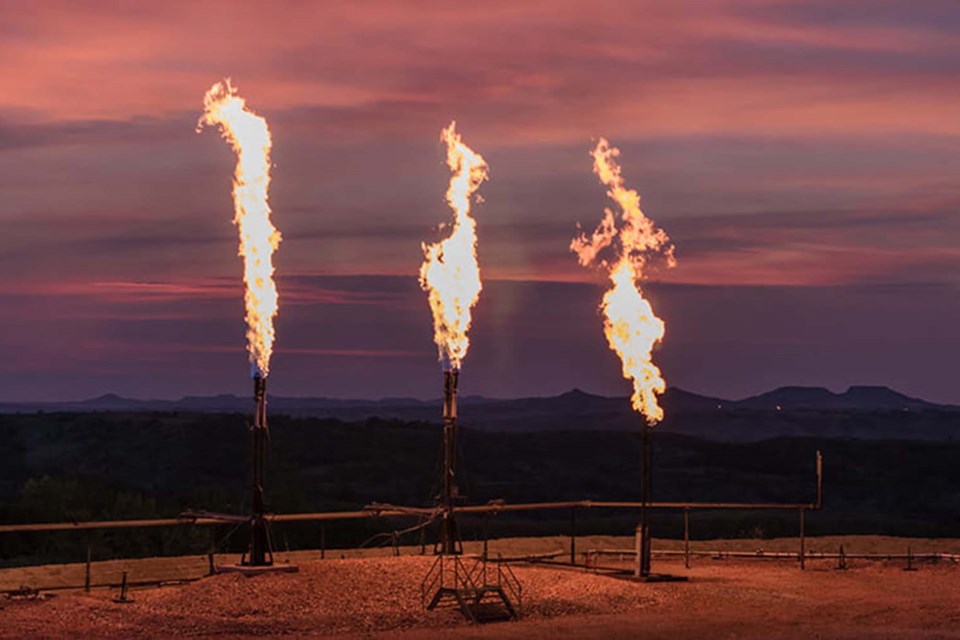As world leaders were arriving in Dubai for COP28 last week, Alberta announced it had hit methane reduction targets for its oil and gas industry three years ahead of schedule. The province has committed to a goal of reducing methane emissions by 45 per cent from 2014 levels by 2025, which the latest report from Alberta Energy Regulator indicates was achieved last year.
But because the emissions targets are based on inexact estimates rather than actual emissions measurements, it is difficult to say how much has really been accomplished, said Mathew Johnson, engineering professor and scientific director of Carleton University's Energy & Emissions Research Laboratory.
“Kudos if they've reduced by 45 per cent, but we'll never know. That is not based on measurements,” Johnson said. “I can't say if they've reduced or not. I don't know. Because nobody as measured the baseline, it's kind of an arbitrary baseline of which we might have reduced – and hopefully have reduced.”
The Alberta Energy Regulator currently estimates total methane emissions from upstream oil and gas in 2022 were 17.3 megatonnes of carbon-dioxide equivalent (Mt CO2e), down from 31.6 Mt CO2e in 2014, a spokesperson for the Ministry of Environment and Protected Areas said in an e-mail. In a report released earlier this year on methane emissions management from the upstream oil and gas sector, the AER put the baseline 2014 emissions total at 27 Mt CO2e. That 2014 baseline, used to assess emissions reduction targets, was estimated to be 25 Mt CO2e in January 2022.
"Alberta has continually expanded its monitoring and reporting as new technology becomes available. As part of that, we continue to update all annual estimates to ensure accuracy," Ryan Fournier, press secretary to the Minister of Environment and Protected Areas, said in an e-mail.
Johnson and the Carleton team used ground-level and aerial surveys along with satellite data to produce a measurement-based inventory of methane emissions in Alberta’s oil and gas sector in 2021. Methane emissions were found to be 1.5 times greater than government and industry estimates, according to their research now published in the peer-reviewed journal Nature Communications Earth and Environment.
These measurements indicate emissions in 2021 were higher than the province's highest estimates for 2014.
Emissions estimates low across the country
Alberta isn't alone in its undercounting of emissions. Wherever methane emissions have been measured, they have been significantly higher than previously thought. The team from Carleton previously found Saskatchewan's methane emissions to be almost four times more than reported, and the government of Canada's own scientists found methane emissions were twice as high as past national estimates.
The government of British Columbia has been working closely with the Carleton team to improve emissions monitoring, using the researchers' year-over-year measured inventories to inform policy and decision making, Johnson said.
"They deserve credit for leading this, really in the world. We're in the midst of a multi-year effort in B.C., we have co-funding from the B.C. government and United Nations together, because this is an important template for how you might do this elsewhere in the world."
Though other jurisdictions may soon implement similar measurement-based emissions reduction template, it is unlikely Alberta will be an early adopter.
"There is no universally accepted standard on how methane is measured and jurisdictions around the world are debating different approaches. Alberta will continue on this trajectory to significantly reduce methane emissions while leveraging the best available data to support the current and back-casted methane emission inventory," Fournier said.
Measuring current emissions is what matters
We'll never really know what Alberta's oil and gas methane emissions levels were in 2014, because they weren't measured, Johnson said. "And in that sense, it's really hard to know with any certainty how much emissions have come down.”
However, whether or not Alberta has reduced methane emissions by 45 per cent “sort of doesn’t matter,” Johnson said.
“The real point is that is not the target we need. What really matters is what is the methane intensity of what is being produced now. And unfortunately, that is something we do have accurate measurements of and they're quite a bit above the international targets set currently.”
Methane intensity is a measure of how much methane escapes into the atmosphere for each unit of energy delivered. Both the European Union and the United States are considering setting a 0.2 per cent methane intensity targets, which could also be applied to gas imports. Research puts the average methane intensity for Alberta’s oil and gas producers at 1.7 per cent, which is on par with many U.S. basins but roughly four times greater than in B.C.
“We should just all agree that we need to reduce methane per-unit energy to at least below 0.2 per cent. That's the only thing that currently matters. And that 45 per cent is really just a red herring,” Johnson said.
Methane is a greenhouse gas with a warming potential at least 25 times that of carbon dioxide, and scientists estimate it is responsible for about one-third of observed global warming to date. Cutting methane emissions from oil and gas is increasingly being pursued by governments as a fast and achievable way to combat climate change. Ahead of the COP28 climate summit, 12 major oil and gas companies committed to lowering methane emissions to near-zero by 2030.
Establishing low-intensity gas requirements now would be pragmatic, even from a purely industry point of view, Johnson said. If Canada fails to keep pace with international standards, Canadian gas producers could be punished by import fees and price differentials on methane intensity in foreign markets.
“The survival of Canada's energy sector largely depends on people getting behind this methane intensity standard before it's too late,” Johnson said.



